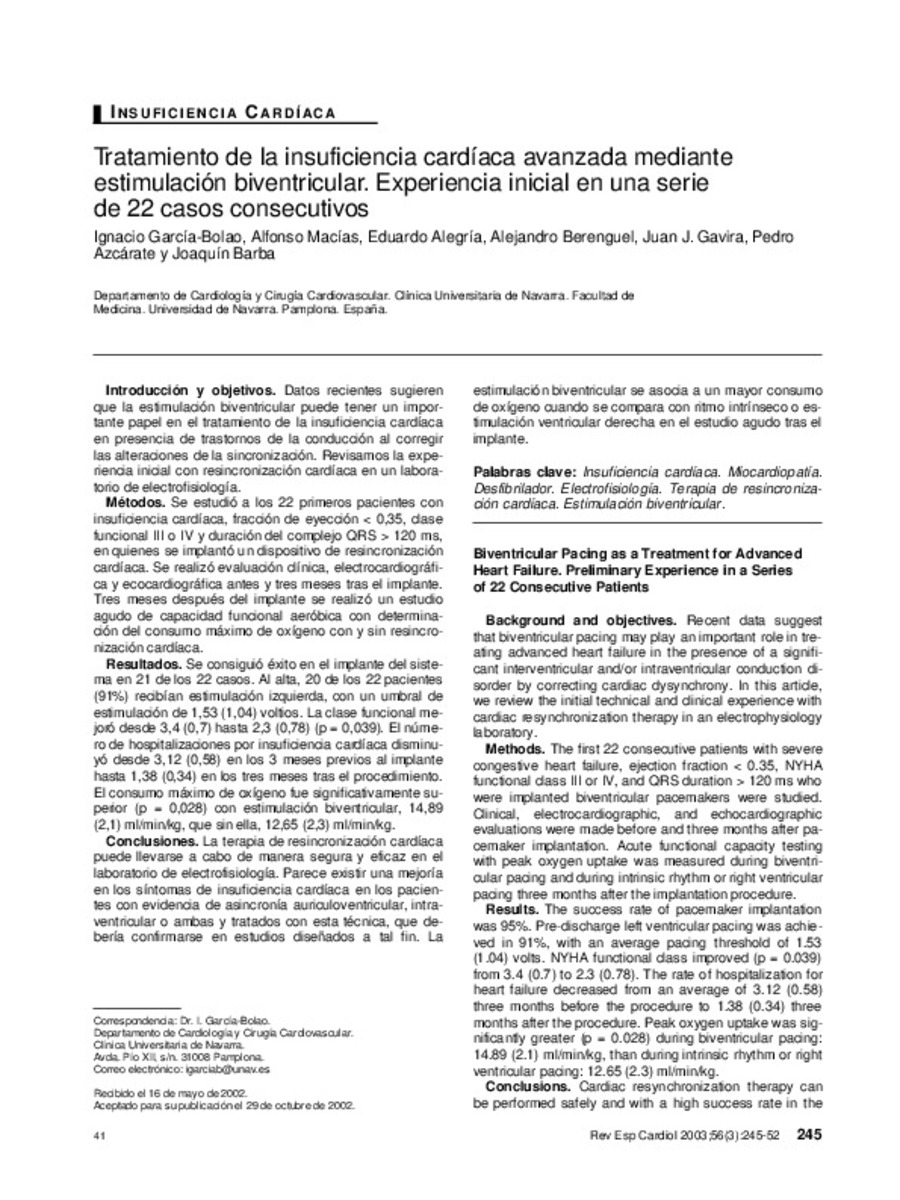Tratamiento de la insuficiencia cardíaca avanzada mediante estimulación biventricular. Experiencia inicial en una serie de 22 casos consecutivos
Otros títulos :
Biventricular Pacing as a Treatment for Advanced Heart Failure. Preliminary Experience in a Series of 22 Consecutive Patients
Palabras clave :
Cardiac Pacing, Artificial/methods
Heart Failure/complications/therapy
Heart Function Tests
Fecha de publicación :
2003
Editorial :
Elsevier España
Cita:
Garcia-Bolao I, Macias A, Alegria E, Berenguel A, Gavira JJ, Azcarate P, et al. Tratamiento de la insuficiencia cardíaca avanzada mediante estimulación biventricular. Experiencia inicial en una serie de 22 casos consecutivos. Rev Esp Cardiol 2003 Mar;56(3):245-252.
Aparece en las colecciones:
Estadísticas e impacto
0 citas en

0 citas en

Los ítems de Dadun están protegidos por copyright, con todos los derechos reservados, a menos que se indique lo contrario.








